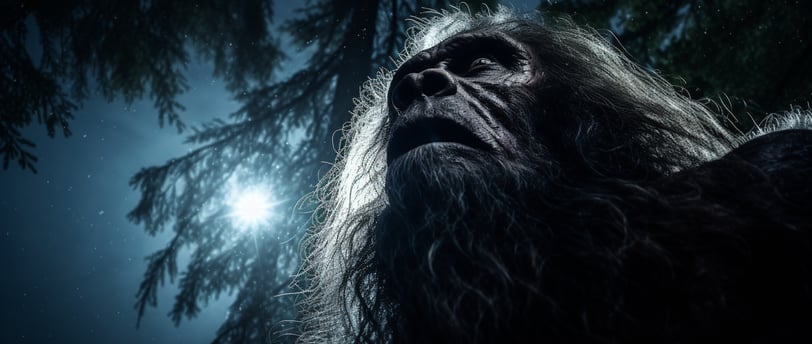My Encounters with Bigfoot ‘Mumbling’ Sounds.
The so-called "mumbling"—a low, rumbling vocalization that defies classification—is among the most intriguing noises I've heard


A Closer Look at the Mysteries of "Mumbling" in Bigfoot Research
Mysterious noises frequently play a role in the puzzle we're attempting to solve in Bigfoot study. The so-called "mumbling"—a low, rumbling vocalization that defies classification—is among the most intriguing noises I've heard. I've heard it several times, both by myself and with other researchers, and each time it brings up the same issues. Is this a language of sorts? Is it just background noise, or is it something else?
Experiences of the Inexplicable
During an expedition just north of Capreol, Ontario, while searching for evidence of Bigfoot, I encountered one of the most inexplicable sounds I’ve ever heard—what I now call "mumbling." It began subtly, a low, muffled sound that felt almost conversational, but unlike anything from known wildlife. It was rhythmic and purposeful, carrying an undeniable weight. As it continued, it became clear that this wasn’t a random noise or animal call; it had an intentional cadence to it, like voices communicating just out of sight. With another researcher beside me, we stood frozen, exchanging looks of disbelief as the mumbling grew louder and more distinct, each passing second confirming that we weren’t imagining it. The forest around us seemed to respond in kind, falling silent, as if aware of the strange event unfolding.
Since that moment, I’ve realized how vital it is to capture these sounds, which is why I now prioritize setting up audio recording equipment at the start of every field expedition. I’ve learned the hard way that these phenomena can occur without warning, and being unprepared to document them means losing crucial evidence. The experience in Capreol reinforced my belief that sound—especially something as elusive as this mumbling—is a vital part of Bigfoot research. It’s a mystery that demands further exploration, and I’m committed to capturing it, hoping that someday, these strange vocalizations will help shed light on the creatures that inhabit these remote areas.
Setting "Mumbling" in the Right Context
Unusual sounds have been reported in numerous Bigfoot sightings; some of the most well-known of these are from recordings made in the 1970s and dubbed the "Sierra Sounds." These noises, which are frequently referred to as "Samurai chatter," are hard for anyone to mimic, which adds to their mystique. This kind of vocalization appears to fit the rambling I've heard, which makes me wonder if Bigfoot has a special way of communicating.
Potential Justifications
The depth and vibration that some witnesses experience during these encounters may be explained by infrasound, which is used by creatures like elephants. This suggests that Bigfoot may have developed the ability to use low-frequency sound waves, which are hardly perceptible to the human ear, to communicate over great distances. If accurate, this may help to explain why hearing it frequently causes individuals to feel unpleasant or "heavy."
The Importance of "Mumbling"
These instances are crucial to Bigfoot study because they serve as a reminder that sound may include information that is not visible. My curiosity grows with each experience I have with this occurrence. It serves as a reminder of the enormous unknowns that still lurk in the wild, whether it be a language, infrasound, or something else entirely. I keep returning to the woods because of the mystery of "mumbling," waiting for a single epiphany that will let us realize what's truly going on.
I just wasn't ready to record these sounds when they surprised me in the past. I always have recording equipment with me, but it's not always available when these noises come in. Frequently, the moment had already passed by the time I realized what I was hearing. However, this has altered my approach to every setup; now, I set up audio recording equipment as my first duty at every site. To be prepared to record "mumbling" if it occurs, I first concentrate on setting up my recorder to detect faint forest noises and possible vocalizations.
This change in strategy has proven essential to my work. Hearing these sounds is one thing, but recording them is quite another. Deeper insights can be gained via audio recordings; recording these noises is essential to further deciphering the riddle. Having this audio data could help us comprehend what's out there—and why it sounds the way it does—whether it's Bigfoot or another wilderness phenomenon.
Contact us if you have ever experienced the same. contact us